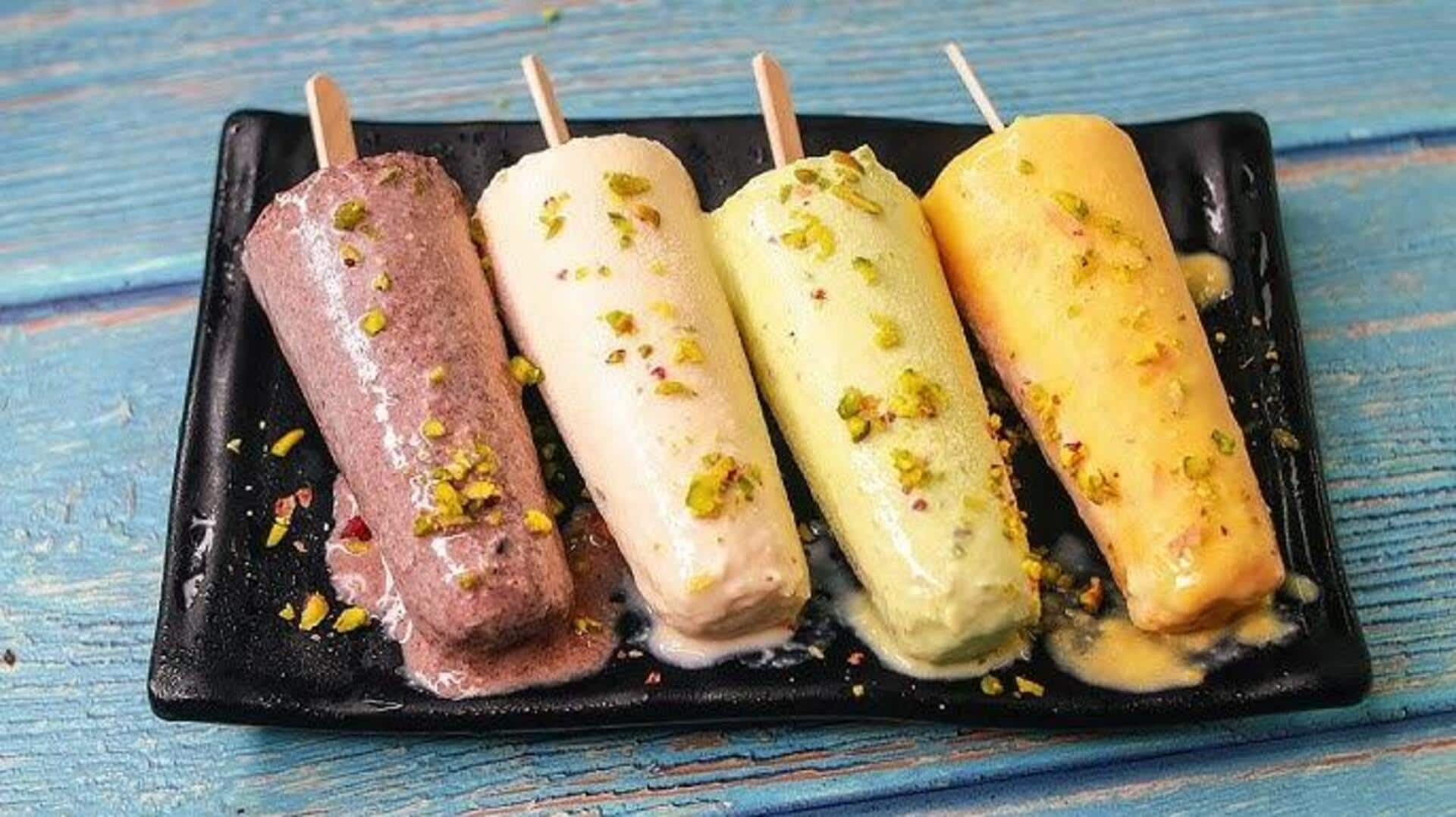
Kulfi: A classic frozen dessert loved by all
What's the story
Kulfi, the traditional Indian frozen dessert, has been a favorite for centuries. Unlike ice cream, kulfi is denser and creamier, thanks to its unique preparation method. The dessert is made by slowly simmering milk until it thickens, adding sugar and flavorings such as cardamom or saffron. This timeless treat is not just a delight for the taste buds but also a part of cultural heritage in many regions.
Preparation
The art of preparation
The preparation of kulfi is an art in itself. The process involves boiling milk for hours until it reduces to half its volume. This slow cooking gives kulfi its signature creaminess. Once thickened, sugar and various flavorings are added before pouring the mixture into molds. The molds are then placed in a freezer until the kulfi sets completely.
Regional varieties
Varieties across regions
Kulfi comes in a variety of flavors depending on the region. While some prefer traditional flavors such as cardamom or saffron, others experiment with rose or mango. In some parts of India, kulfis are even garnished with nuts such as pistachios or almonds to add texture and flavor.
Nutrition
Nutritional aspects
Though kulfi is a dessert, it does have some nutritional benefits. It is generally rich in calcium owing to its milk content, which is good for bone health. Some versions may even have additional ingredients such as nuts that add protein and healthy fats. However, it is important to note that kulfi is also high in sugar and should be consumed in moderation.
Cultural impact
Cultural significance
Kulfi has cultural significance beyond being a dessert option. It is often served during festivals and celebrations as a symbol of hospitality and joy. The preparation and sharing of kulfi can bring families together, creating cherished memories over generations.